Aleksei Ivakhnenko
Samsung AI Center
FIANCEE: Faster Inference of Adversarial Networks via Conditional Early Exits
Apr 20, 2023



Abstract:Generative DNNs are a powerful tool for image synthesis, but they are limited by their computational load. On the other hand, given a trained model and a task, e.g. faces generation within a range of characteristics, the output image quality will be unevenly distributed among images with different characteristics. It follows, that we might restrain the models complexity on some instances, maintaining a high quality. We propose a method for diminishing computations by adding so-called early exit branches to the original architecture, and dynamically switching the computational path depending on how difficult it will be to render the output. We apply our method on two different SOTA models performing generative tasks: generation from a semantic map, and cross-reenactment of face expressions; showing it is able to output images with custom lower-quality thresholds. For a threshold of LPIPS <=0.1, we diminish their computations by up to a half. This is especially relevant for real-time applications such as synthesis of faces, when quality loss needs to be contained, but most of the inputs need fewer computations than the complex instances.
MegaPortraits: One-shot Megapixel Neural Head Avatars
Jul 15, 2022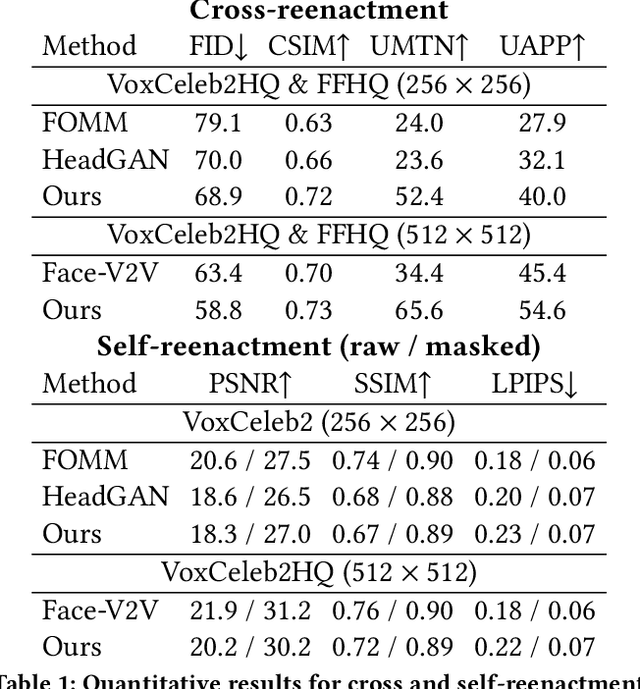

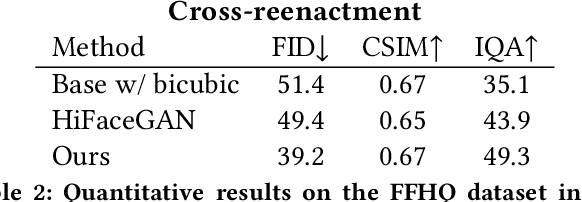
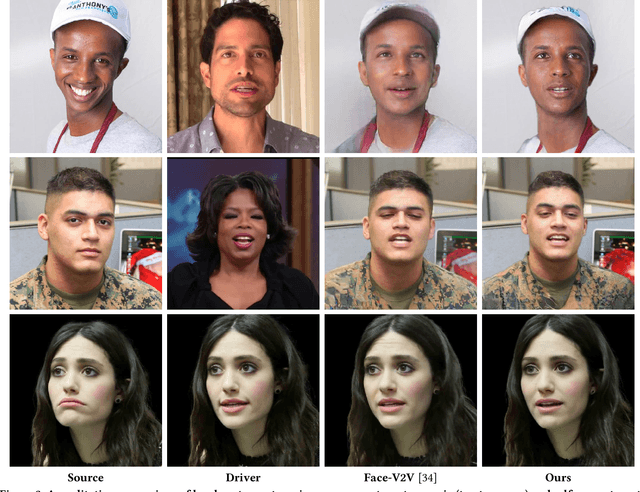
Abstract:In this work, we advance the neural head avatar technology to the megapixel resolution while focusing on the particularly challenging task of cross-driving synthesis, i.e., when the appearance of the driving image is substantially different from the animated source image. We propose a set of new neural architectures and training methods that can leverage both medium-resolution video data and high-resolution image data to achieve the desired levels of rendered image quality and generalization to novel views and motion. We demonstrate that suggested architectures and methods produce convincing high-resolution neural avatars, outperforming the competitors in the cross-driving scenario. Lastly, we show how a trained high-resolution neural avatar model can be distilled into a lightweight student model which runs in real-time and locks the identities of neural avatars to several dozens of pre-defined source images. Real-time operation and identity lock are essential for many practical applications head avatar systems.
Perceptual Gradient Networks
May 05, 2021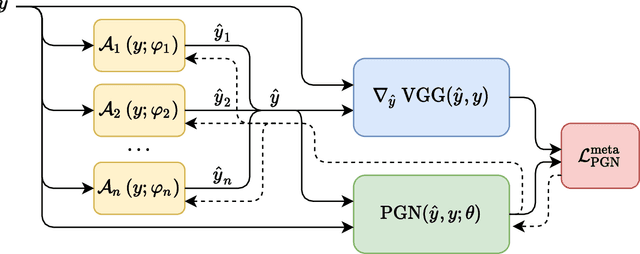
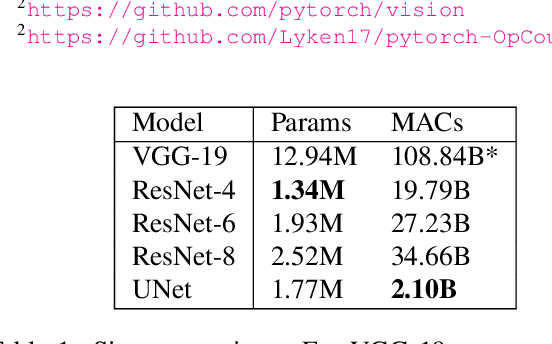
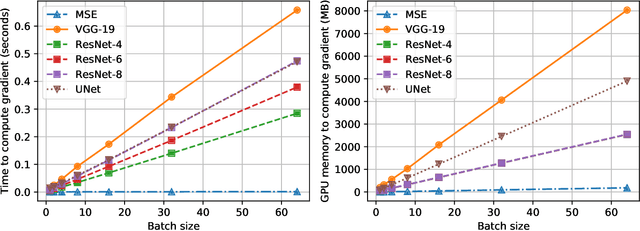

Abstract:Many applications of deep learning for image generation use perceptual losses for either training or fine-tuning of the generator networks. The use of perceptual loss however incurs repeated forward-backward passes in a large image classification network as well as a considerable memory overhead required to store the activations of this network. It is therefore desirable or sometimes even critical to get rid of these overheads. In this work, we propose a way to train generator networks using approximations of perceptual loss that are computed without forward-backward passes. Instead, we use a simpler perceptual gradient network that directly synthesizes the gradient field of a perceptual loss. We introduce the concept of proxy targets, which stabilize the predicted gradient, meaning that learning with it does not lead to divergence or oscillations. In addition, our method allows interpretation of the predicted gradient, providing insight into the internals of perceptual loss and suggesting potential ways to improve it in future work.
Fast Bi-layer Neural Synthesis of One-Shot Realistic Head Avatars
Aug 24, 2020
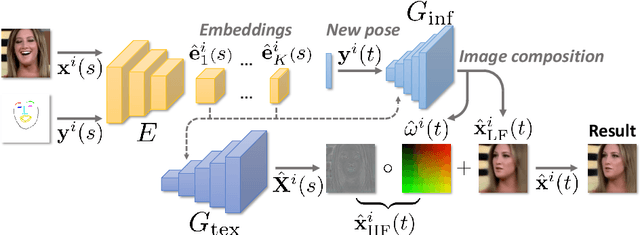
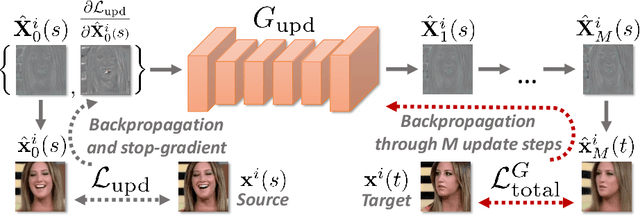

Abstract:We propose a neural rendering-based system that creates head avatars from a single photograph. Our approach models a person's appearance by decomposing it into two layers. The first layer is a pose-dependent coarse image that is synthesized by a small neural network. The second layer is defined by a pose-independent texture image that contains high-frequency details. The texture image is generated offline, warped and added to the coarse image to ensure a high effective resolution of synthesized head views. We compare our system to analogous state-of-the-art systems in terms of visual quality and speed. The experiments show significant inference speedup over previous neural head avatar models for a given visual quality. We also report on a real-time smartphone-based implementation of our system.
Textured Neural Avatars
May 21, 2019
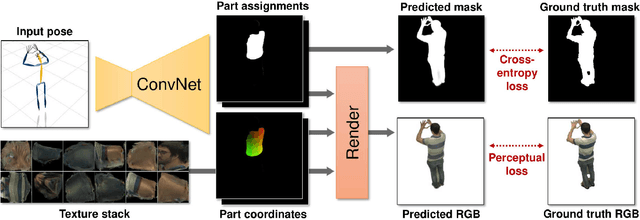
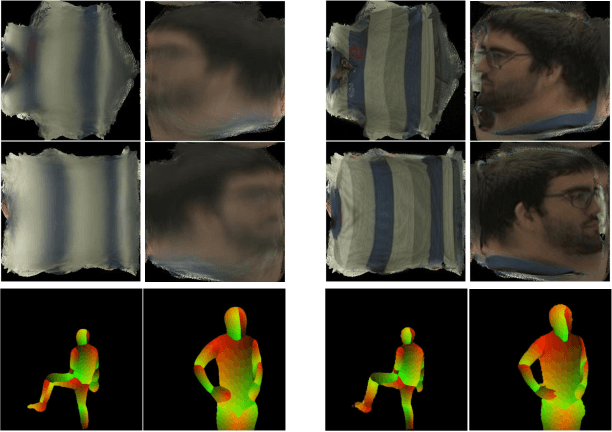

Abstract:We present a system for learning full-body neural avatars, i.e. deep networks that produce full-body renderings of a person for varying body pose and camera position. Our system takes the middle path between the classical graphics pipeline and the recent deep learning approaches that generate images of humans using image-to-image translation. In particular, our system estimates an explicit two-dimensional texture map of the model surface. At the same time, it abstains from explicit shape modeling in 3D. Instead, at test time, the system uses a fully-convolutional network to directly map the configuration of body feature points w.r.t. the camera to the 2D texture coordinates of individual pixels in the image frame. We show that such a system is capable of learning to generate realistic renderings while being trained on videos annotated with 3D poses and foreground masks. We also demonstrate that maintaining an explicit texture representation helps our system to achieve better generalization compared to systems that use direct image-to-image translation.
 Add to Chrome
Add to Chrome Add to Firefox
Add to Firefox Add to Edge
Add to Edge